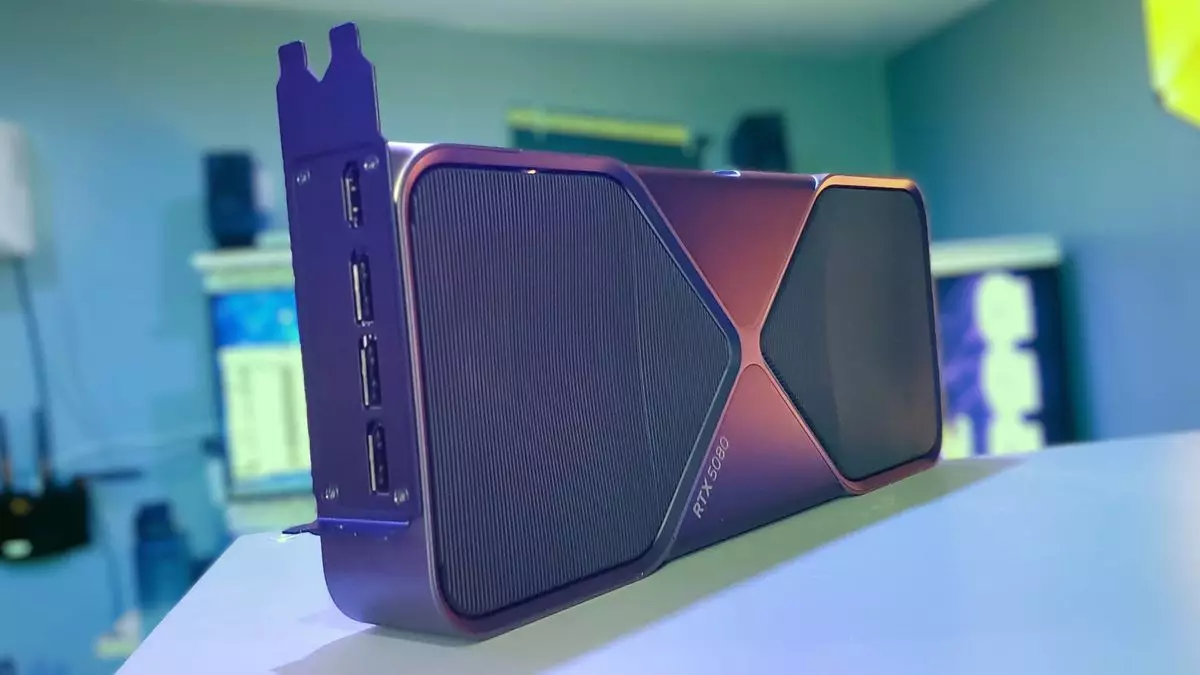The launch of Nvidia’s RTX 50 series graphics cards has been met with an interesting blend of excitement, skepticism, and mixed reviews. Dubbed as “the most powerful graphics core you can jam into a gaming PC” by some, yet characterized as “strangely unexciting” or even a “paper launch” by others, the duality of opinions speaks volumes about the current graphic card landscape. With such a polarized reception, it’s essential to unpack what this new lineup means for technology enthusiasts and everyday gamers alike.
Despite the mixed sentiments, Newegg reported an impressive sell-out timeframe for the RTX 50 series, concluding that the cards flew off the virtual shelves at an unprecedented rate. The retailer indicated that the majority of its stock was claimed within five minutes of availability, although it took about twenty minutes to sell out completely. This dichotomy raises the question: are gamers enamored with these new GPUs, or is a more strategic market manipulation at play? The swiftness of the sell-out could hint at the latter, presenting a scenario where scarcity drives demand, leveraging the emotional investment of a fanatical gaming community.
Furthermore, while Newegg reported the cards’ quick sale, it failed to clarify how the initial stock levels for the RTX 50 series compared with previous Nvidia launches. This oversight creates an air of ambiguity regarding the true demand and availability of these GPUs. Were the stock levels worse than before, leading to a faster sell-out, or was the interest genuinely higher due to technological advancements? In today’s market, where hype often overshadows reality, understanding the conditions surrounding any new product launch is crucial for consumers and investors alike.
Interestingly, data shows that the RTX 5080 has garnered more attention than its pricier counterpart, the RTX 5090. This preference aligns with the general trend among consumers seeking performance-to-price value. As the 5080 is roughly half the cost of the 5090, its broader appeal is obvious. However, framing the 5080 as the more “exciting” option is a subjective take; the truth is that while it offers significant performance enhancements, it may lack the groundbreaking features that enthusiasts are constantly yearning for. This raises the dilemma for Nvidia: innovation or accessibility?
The Role of Prebuilt Systems in the Launch
An intriguing aspect of the release is the involvement of prebuilt gaming PCs that included the new RTX GPUs. Newegg highlighted that it also stocked various brands and configurations, which contributed to the longer sellout time. This trend reveals a striking change in the gaming hardware landscape; many gamers now prefer ready-to-use systems over building them from scratch. As the gaming and technology space becomes more mainstream, more users seem to value convenience over the traditional DIY route.
However, the ramifications of this shift cannot be ignored. If the majority of sales come from prebuilt systems, are we catering to a future generation of gamers who may lack an understanding of hardware mechanics? As interest in advanced graphics continues to grow, it’s vital for both manufacturers and retailers to educate consumers about their products rather than simply pushing out inventory.
The overwhelming demand for the RTX 50 series has prompted Newegg to commit to working with Nvidia and its partners for future restocks. Some reports indicated immediate follow-ups in inventory levels shortly after the launch, suggesting that retailers are at least somewhat prepared for high demand. However, this strategy raises another set of questions: How sustainable is the demand for these products? Should consumers expect to see these cards become regularly available, or will periodic scarcity continue to dominate the GPU market?
As the dust settles on this latest launch, one fact becomes glaringly apparent: whether you perceive the RTX 50 series as an extraordinary advancement or a less-than-stellar release, the entire ecosystem is tightly knit with consumer sentiment, market dynamics, and the inherent excitement of gaming culture. As we await further information regarding restocks and availability, one thing is clear: gamers are eager to embrace what’s next, ready for the thrill that each new technology promises to deliver.

